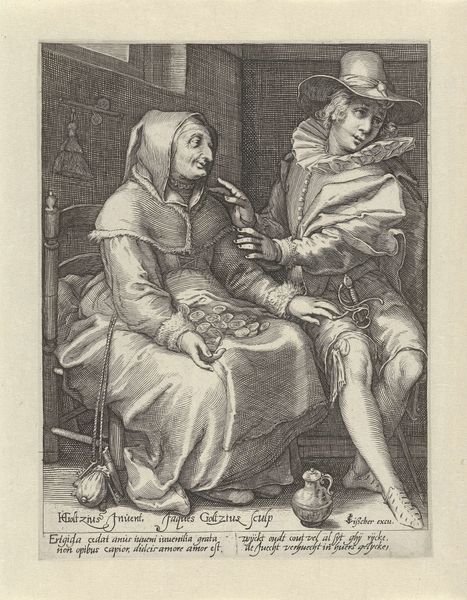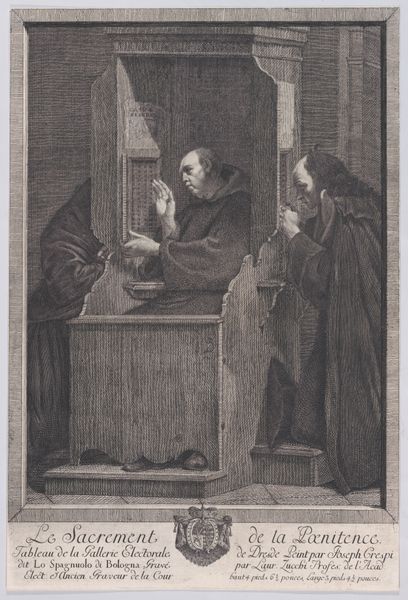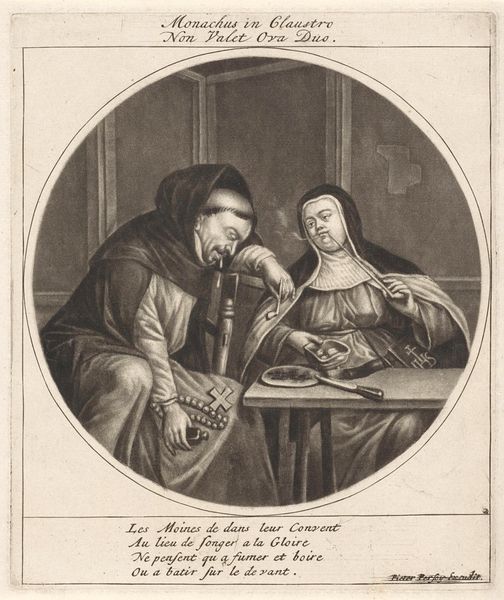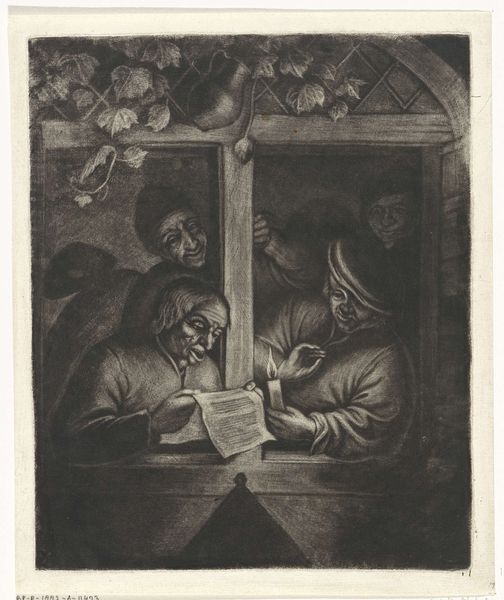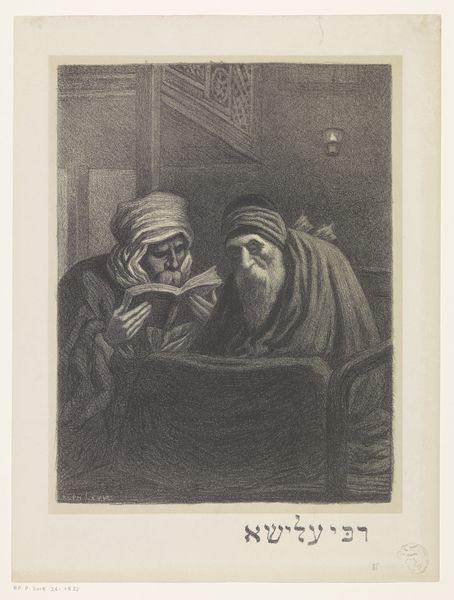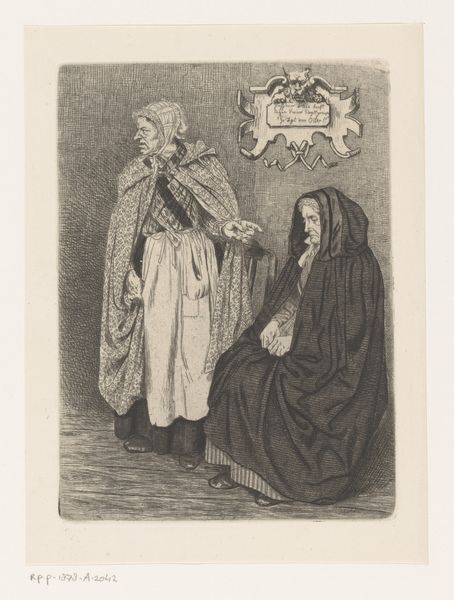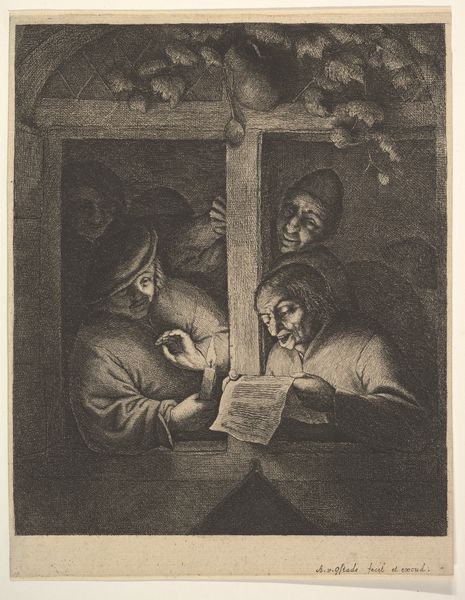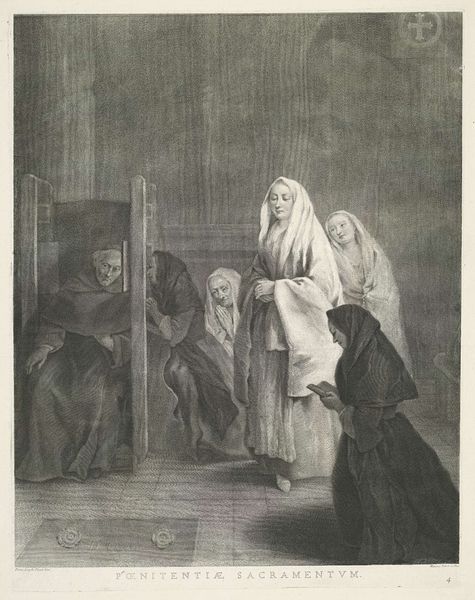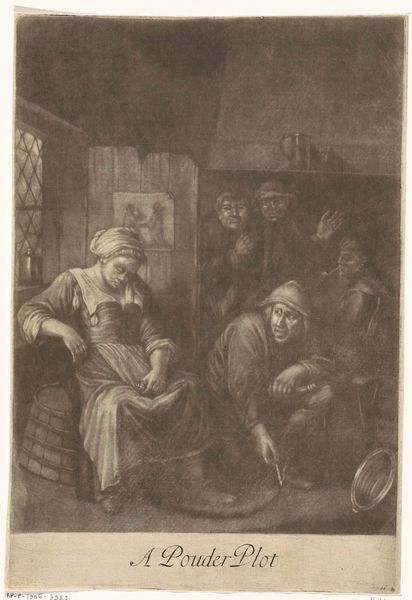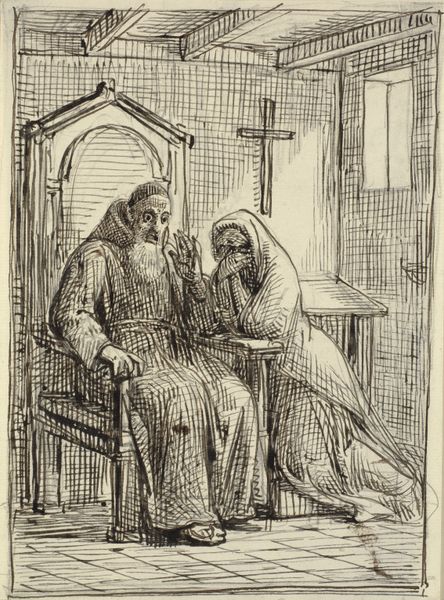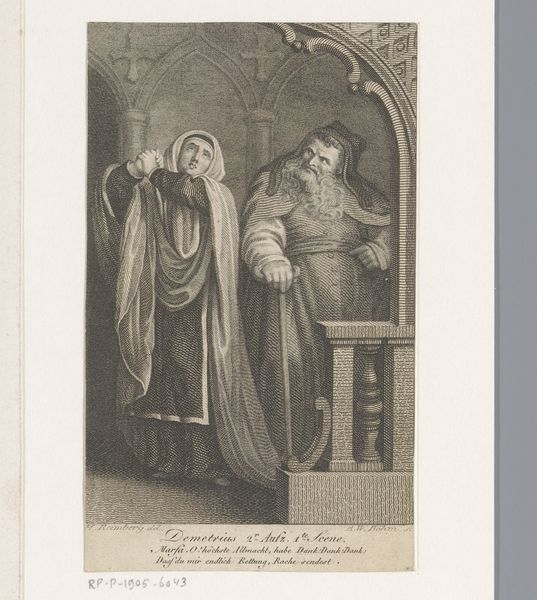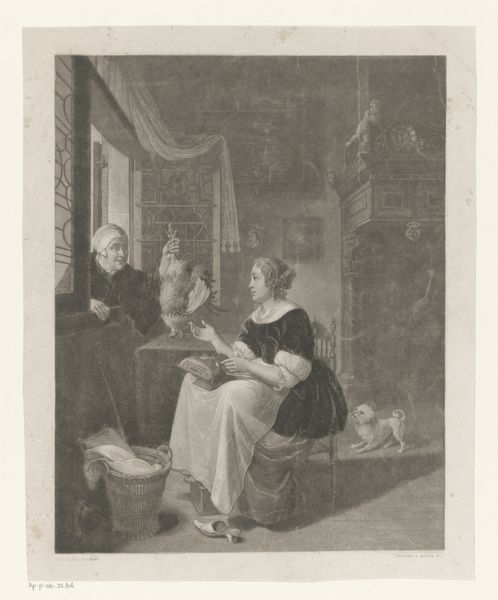
drawing, charcoal
#
portrait
#
drawing
#
medieval
#
baroque
#
caricature
#
charcoal drawing
#
charcoal art
#
surrealism
#
portrait drawing
#
genre-painting
#
charcoal
Dimensions: height 242 mm, width 187 mm
Copyright: Rijks Museum: Open Domain
Editor: This charcoal drawing, "Slapende monnik door een non met een haardtang gewekt" or "Sleeping monk awakened by a nun with fire tongs", by Jan van Somer, dates back to somewhere between 1655 and 1699. It's so interesting-- it seems to capture a humorous, almost mischievous moment within a monastic setting. What does this scene tell you about the social context it comes from? Curator: This work presents a fascinating glimpse into the social attitudes toward religious figures of that period. The portrayal of a monk being disturbed by a nun with fire tongs suggests a critique, or at least a playful commentary, on the established orders. How might the public have received an image that gently mocks monastic life? Editor: Well, depending on the audience, it could be seen as satirical and amusing, or maybe as disrespectful toward the church and monastic vows. Curator: Exactly! Images like this played a crucial role in shaping public perception. Consider the rise of print culture during this time. The easy distribution of images allowed for wider dissemination of social critiques. What effect would readily available prints have on social dynamics? Editor: I guess, circulating widely, these images might gradually erode traditional authority. Visual satire could become a form of social commentary. Curator: Precisely. It's a form of visual discourse! The choice of charcoal, a medium that allows for quick and expressive mark-making, also hints at the artwork's function as commentary on social roles and norms. Think about the socio-political landscape; what conflicts might these caricatures allude to? Editor: This makes me think about how art can participate in broader conversations around power, gender and authority. Curator: Yes, we can interpret the art according to cultural and institutional influences, looking beyond just aesthetics! Editor: I never considered art to play a role in social and political aspects and always just saw it as expression. Curator: The beautiful thing about art is the deeper conversation we can have using historical background.
Comments
No comments
Be the first to comment and join the conversation on the ultimate creative platform.
